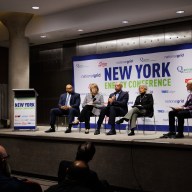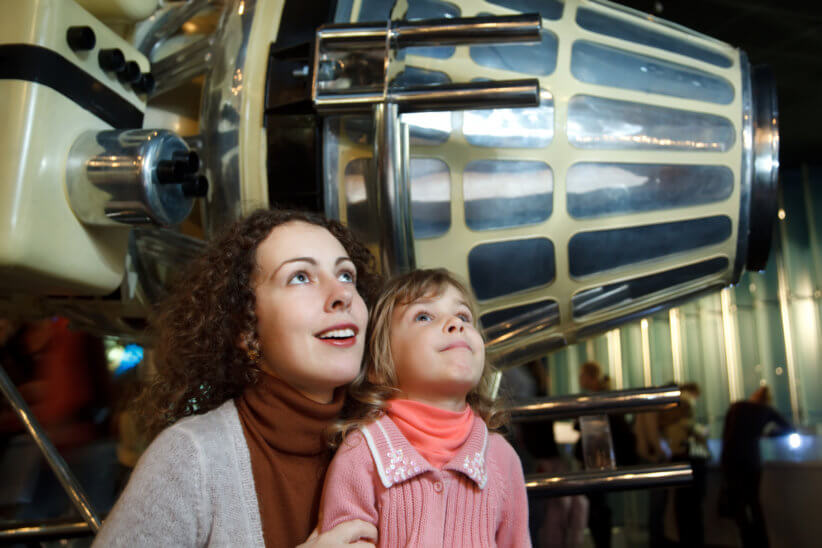By Alex Berger
Oct. 31 is Halloween, and the view that neighbors stick razor blades into apples and hand them out to unsuspecting trick-or-treaters is harder to dispel than a vampire.
Virtually all American children heading out on Halloween will hear, “Don't eat anything unwrapped!” ringing in their ears and return home to a parent poised to purge their booty of arsenic and razor blades.
“None of which has ever been reported in candy given to a child by a neighbor [since 1958],” concludes sociologist W. Best after examining newspapers dating back to that year.
Halloween is a day for putting on false faces; for politicians, it is every day.
One boy died after eating cyanide-laced candy in 1974, but guess who gave it to him? Daddy. Pop was trying to collect some insurance money — and was executed for his efforts.
In 1970, a 5-year-old Detroit boy died of a heroin overdose, but that was also family-related. He had gotten into his uncle's drug stash. After the boy died, his family had sprinkled the heroin onto his candy bar to divert suspicion.
Thanks to politicians, we have trick-or-treat all year.
One little girl died in the midst of trick-or-treating a few years ago, but that turned out to be a case of congenital heart failure, not foul play. Conclusion: Children are not being randomly harmed on Halloween. But everyone still thinks they are. Why?
For the answer, we must look into the American psyche, European history and Hershey, Pa.
The fact that parents no longer know or trust neighbors is one reason for suspicion. Years ago, everyone knew their bad neighbors and avoided them. But in today's mobile society, they have no idea who moved in next door.
Years ago, ghosts scared you on Halloween. Today, it is the Dow Jones.
In the 1940s, however, when everyone knew their neighbor, children were already scared to death of their neighbors on Halloween. So why the apprehension on Halloween? Perhaps the fear begins with the holiday itself.
Halloween is a holiday of harvest and, just as spring holidays celebrate planting, going from death to life, Halloween celebrates departure, going from life to death because spring is over.
In Europe, Halloween is a time to pay homage to the dead. To cheer up long-gone loved ones, Europeans spruce up their graves and bring them food. They believe their deceased, feeling neglected, might otherwise rise up and haunt their progeny.
The most embarrassing thing at last year's Halloween party was when James Carville was asked to take off his mask: He was not wearing one.
In America, our take on Halloween is different. Because this is the New World, our festivities tend to concentrate on children — giving them food, hoping to keep them instead of dead ancestors happy and avoiding their tricks with a treat.
Europeans' fear of being visited by the dead on Halloween got translated into the American fear of death visiting our children via a razor blade in an apple. Is it a coincidence this fruit that plays a role in stories, from the apple that Adam ate to the apple the evil queen gave Snow White?
The general fear of drugged Halloween candy started in the late 1960s, said Best, when parents feared hippies were going to give their children sugar cubes with LSD. By the 1970s, the fear switched to pins and razor blades. Candy-tampering came back in 1982, when many died from cyanide-laced Tylenol.
The jack-o'-lantern should be a symbol of politicians: a head with nothing in it.
Now, let us examine the legend from a different angle. If homemade treats and wholesome apples are the repository of our collective fear, what is the one Halloween treat we still trust? Store-bought, fully wrapped, mass-produced candy.
We take little notice of the mistrust of homemade treats, which leaves Hershey's and Nestlé's standing alone in the Halloween candy field. The saddest consequence of the contaminated-candy legend is that we are teaching our children to assume their goody-giving neighbors are out to kill them.
So, maybe this year it is time for a little trust, said Best — unless, of course, that apple has a gash down its side.
Contact Alex Berger at news@timesledger.com.



























